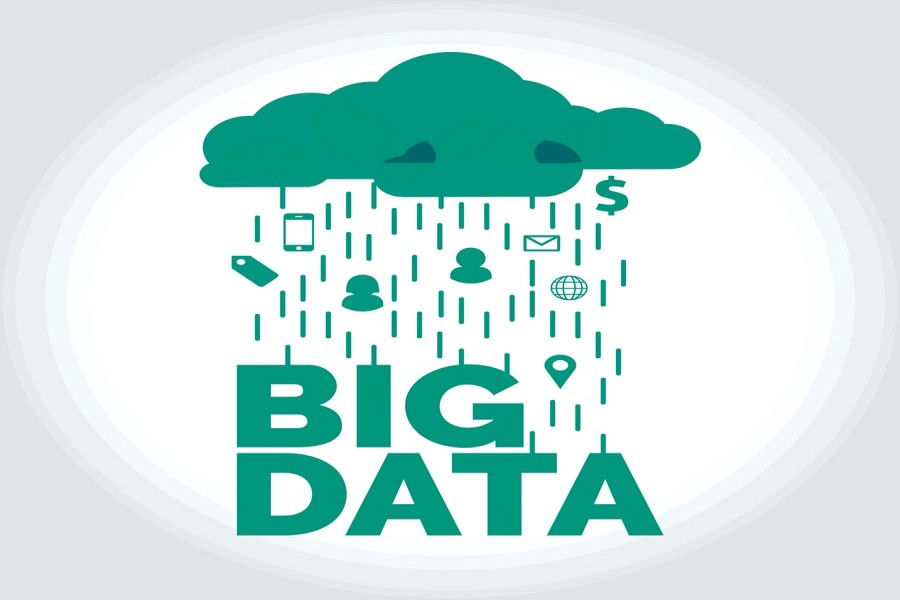In recent times, 'big data' and 'analytics' are two of the common terms that regularly pop up in blogs, vlogs, career advices and in stories of organisations coming up with nifty new products. Despite the heavy chatter, questions such as 'What exactly is the difference between the two?', 'How to learn these skills?' and 'Is it really a business specialisation? Why would a business graduate learn to code?' are yet to be properly answered.
Think about a manager working in a supermarket. He wants to know how to locate the beef, poultry and the egg aisles. So, he can either rely on his past experience and design a similar layout, or he may collect some information. He already has the video footage of the customer movements and the sales data of the store. All that is left is to change different types of layout and see how the sales pattern and the sales amount change. The layout that maximises the sales for the longest period of time should be the solution. When we are looking at a managerial decision-making problem where we are collecting the data and then using tools to analyse the data, we are going through the whole process of business analytics. If you collect the data over six months and across 10 different stores, you will have a very big repository of both numerical and visual data. Such a large amount of data is called ‘big data’, and when you are using big data to answer the layout question, the whole process becomes big data analytics (BDA).
Whether we need our business graduates to have such a skill or not, that is another pressing question. I believe, the skill to answer questions based on evidence from data always helps them to make a solid decision. In slightly more quantitative business functions like operations and supply chain, data is one of the keys in daily decision making. In fact, operations and supply chain management are the functions that have been making use of BDA even before the term has gained popularity. Enterprise Resource Planning (ERP) software has been the backbone of many large organisations, even in Bangladesh. Another data-driven function is that of finance. For example, a stock investor knows that news regarding a company creates fluctuations in the stock market often. He can use web mining techniques to have a programme that can collect the news headlines related to his stocks every single day, and see how the news is affecting the stock fluctuations. So, he can use the news to predict possible fluctuations and can make some quick bucks, if his decision making is quick enough.
Being a lecturer, this writer has seen people relate marketing and human resource management functions of business as more qualitative and intuition-experience driven. But think of this scenario - you oversee a very large ready-made garment (RMG) factory and you want to see whether the employees are being efficiently deployed in the manufacturing process. Suppose, you have a comment box for employees and supervisors and you receive many comments. The beauty of BDA is that it is not only limited to numerical data but also spans over to audio-visual and textual data. You can bring these together to monitor what is hindering your employee motivation.
The field of marketing is where BDA is bringing in some interesting changes. Most marketing firms and agencies have been open about the fact that besides creativity, communication and intuition, data is the next key to be successful. BDA can help companies find out the behavioural patterns of the customer, the way they interact with the promotions of a company, how they purchase products, what product features lead to a successful sale and much more. Tools such as social media analytics can give information about what the social media is talking about the company or its campaigns right now. With proper planning, social media analytics can be paired with BDA to marketing communications that can go viral.
But then comes a harder question - how should a business graduate develop the skills to BDA. Frankly, a level of programming knowledge is required, as two of the most powerful analytics tools are R (a data coding language) and Python (a versatile programming language). So far, our business graduates and managers are exposed to analysis using Excel and SPSS (two of the most common software being used for data analysis), but these have their limitations. By learning how to code, graduates can mine and harvest massive data from Internet. And these are not that hard to learn, they are all English based codes. the best places to learn BDA is to start to learn R and Python through guides from CodeAcademy and Analytics Vidhya, and these are all free. You can also learn in a more structured way through courses online from Coursera and EdX, or from training courses that are being offered in many places in Dhaka. There are websites which give access to large datasets, such as Kaggle.com and DataWorld.com, and the ideal thing to do is to download a dataset and start playing with it.
BDA candidates are actually very few in Bangladesh compared to our neighbouring country and even other countries across Asia, but the demand is there. So, my advice as an educator, trainer and a researcher in BDA will be that we need to start taking steps towards learning BDA and implementing it in our work fields, and better now than later.
The writer is a lecturer of Applied Statistics and Decision Support Systems at North South University. He is an adviser for 10 Minute School and analytics trainer at Light Castle Bangladesh.


